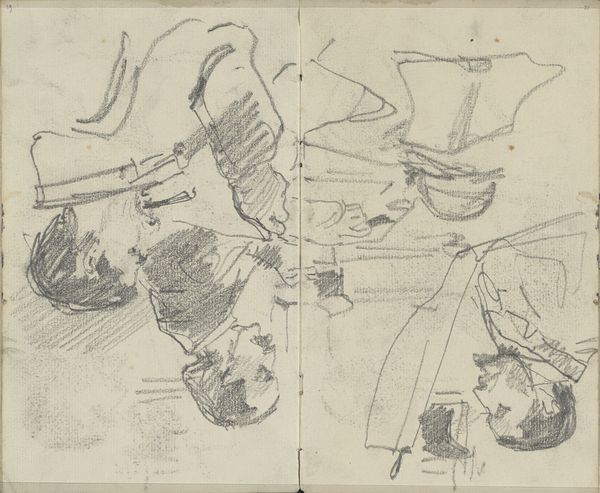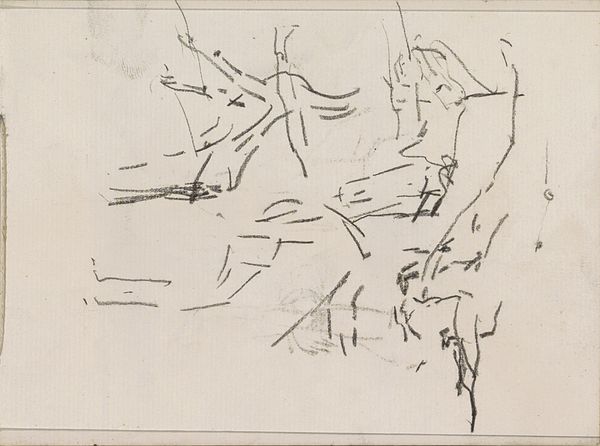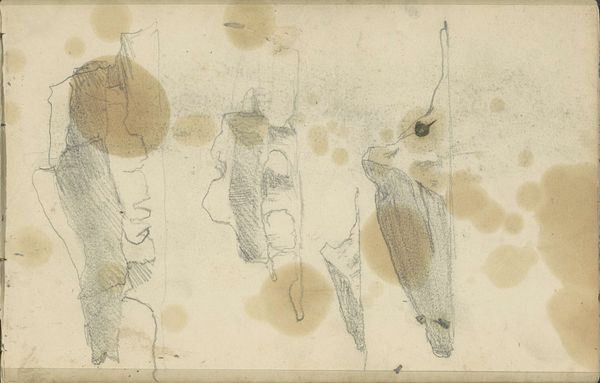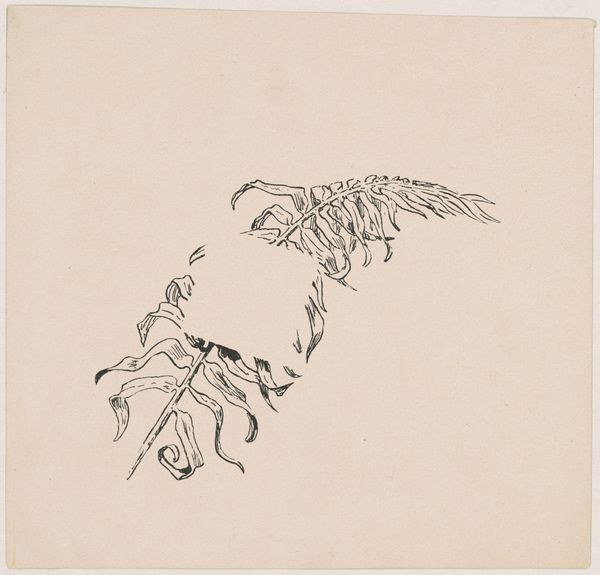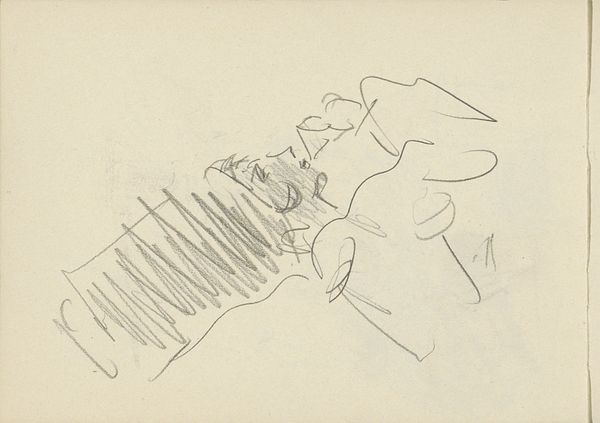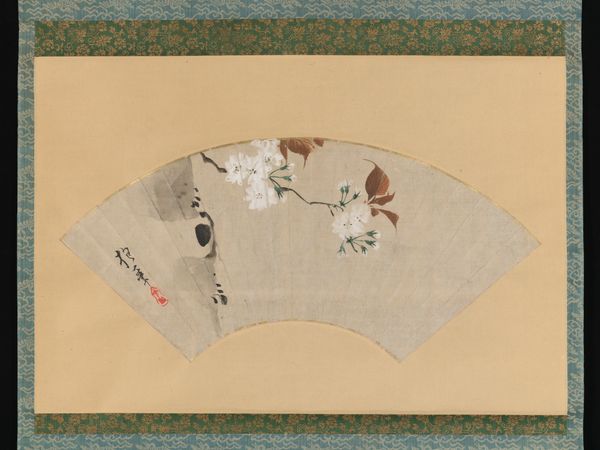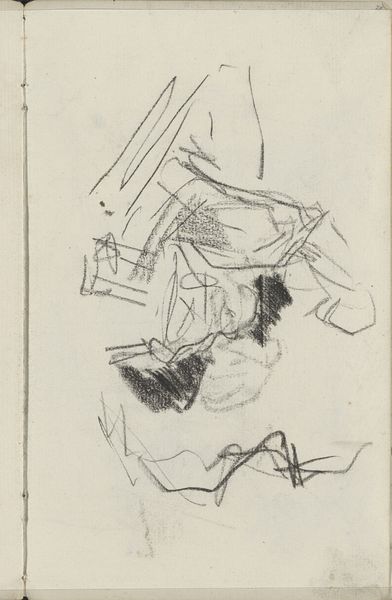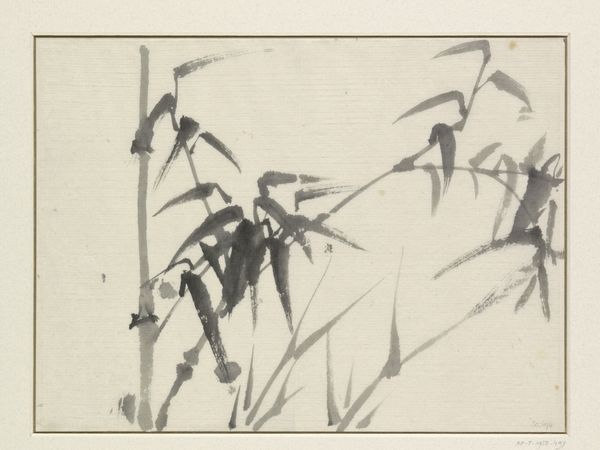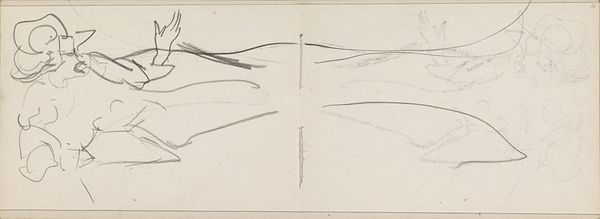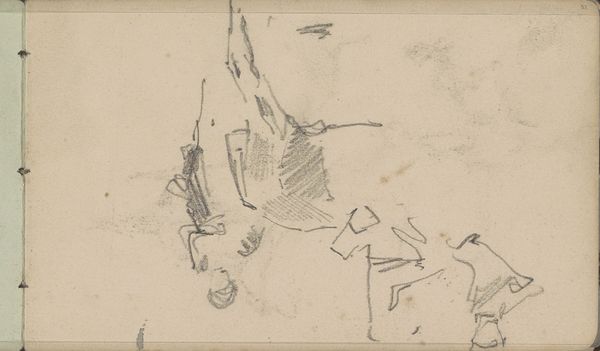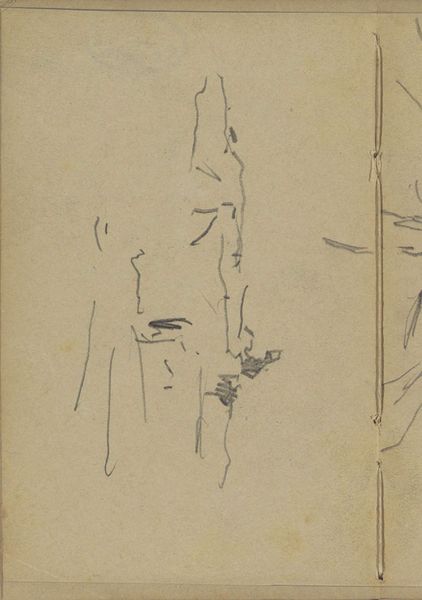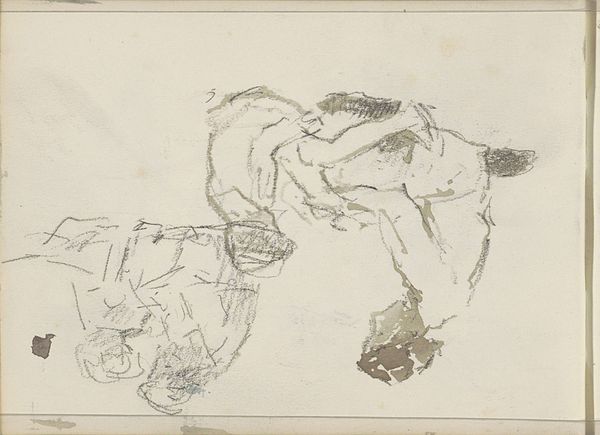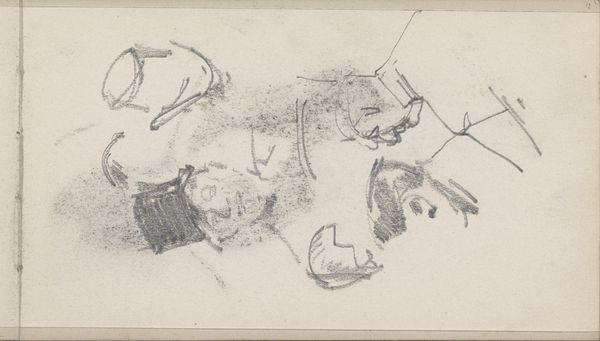
Copyright: National Gallery of Art: CC0 1.0
Henri de Toulouse-Lautrec created "German Babylon" in 1894, and its composition is immediately striking. The print is divided into contrasting halves: a solid, flat beige block on the left, and a dynamic, figural scene on the right. This division creates a tension, a visual barrier emphasized by the stark, diagonal lines cutting across the center. On the right, we see a parade scene rendered with Lautrec’s signature economy of line. Figures on horseback and elegantly dressed women are depicted with swift strokes, capturing their movement and vitality. The muted color palette unifies the composition, yet also hints at a certain restraint. The title suggests a critical commentary on German society, perhaps highlighting a rigid social structure. The solid beige field and the stark lines might represent the constricting forces at play, while the lively parade hints at the underlying tensions within this 'Babylon.' This work invites us to consider how seemingly simple forms can convey complex social and political undertones.
Comments
No comments
Be the first to comment and join the conversation on the ultimate creative platform.
